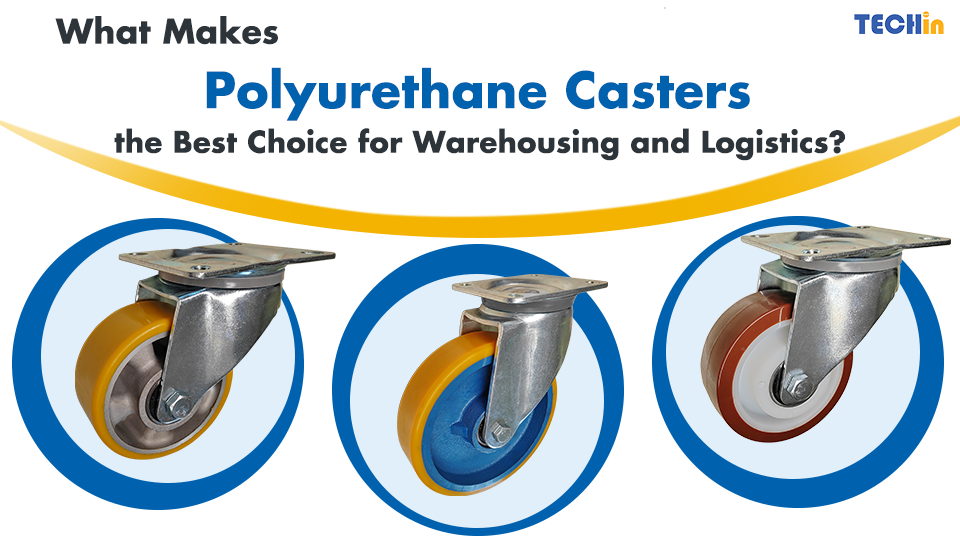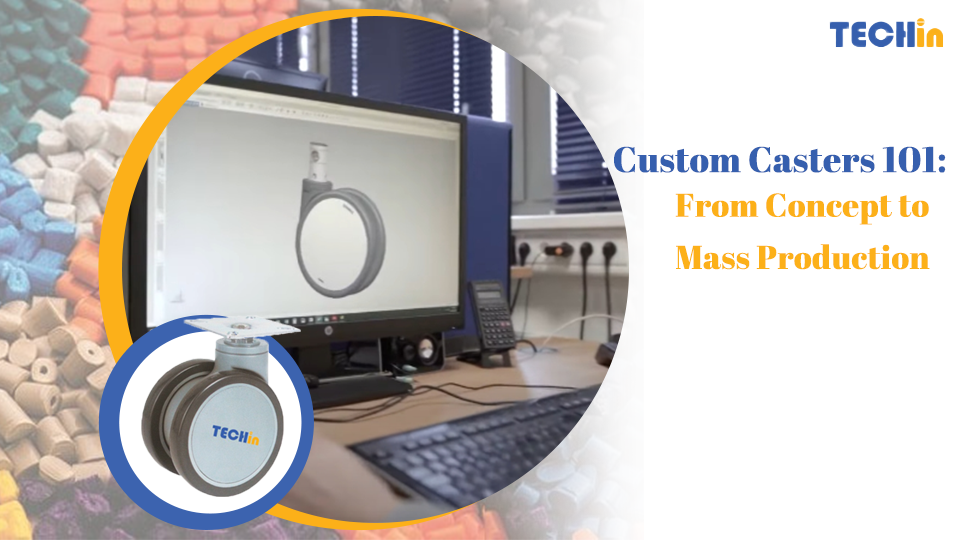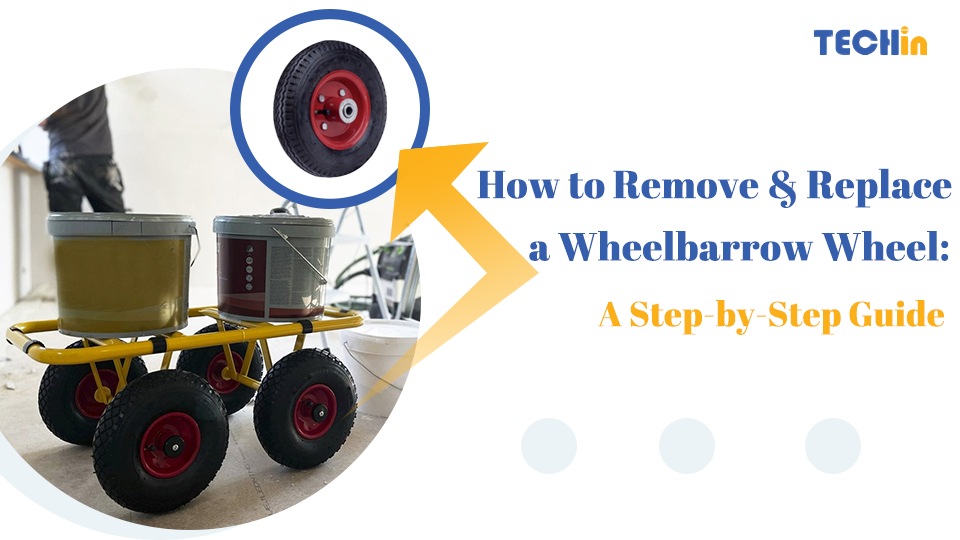Introduction
Moving heavy stuff without damaging floors or making noise is a daily challenge in warehouses and furniture handling. Poor-quality casters lead to breakdowns and safety issues. Polyurethane casters are a smart, durable solution for demanding logistics environments—both industrial and domestic. Here’s your complete guide to choosing the best.
Polyurethane casters are high-performance wheels made from durable polyurethane material. They offer excellent load-bearing capacity, floor protection, and resistance to wear, oil, and chemicals. Ideal for warehouses, furniture, and logistics operations, they roll smoothly and quietly on various surfaces, making them perfect for indoor use.
Let’s break down exactly why polyurethane casters are preferred, how to pick the right ones, and what to watch out for.
What Are Polyurethane Casters?
Polyurethane casters are wheels with a core—usually made of metal or plastic—covered in a polyurethane tread. This material blend gives them a balance of strength, flexibility, and floor-friendly softness. They’re often used in caster wheel manufacturing by companies like RWM Casters, Colson Group, Techin Castor, and others in the caster industries.
Polyurethane casters are common in:
- Warehousing carts and trolleys
- Furniture applications
- Assembly lines
- Hospital and commercial equipment
What Are the Advantages of Polyurethane Casters?
Here’s why buyers from both logistics companies and hardware supermarkets choose polyurethane over rubber or metal:
- Non-marking and floor-safe: Ideal for delicate flooring like hardwood or tile
- Durable: Excellent resistance to wear, tear, oils, chemicals, and solvents
- Load capacity: Superior to rubber wheels; can carry heavy equipment with ease
- Quiet rolling: Reduces noise pollution in workplaces
- Shock absorption: Perfect for fragile load handling
- Longer lifespan: Requires fewer replacements, reducing operational costs
That’s why polyurethane is a go-to material for most durable casters in the industry.
What Are the Uses of Polyurethane Casters in Warehousing & Furniture?
These casters are incredibly versatile. In warehousing and logistics, they’re fitted to:
- Dollies and hand trucks
- Racks and mobile platforms
- Conveyor equipment
- Pallet jacks and tow-line applications
For furniture, they’re found on:
- Mobile desks and tables
- Shelving units
- Office chairs and display stands
Because they roll smoothly and protect surfaces, polyurethane casters are also common in hardware supermarket DIY furniture kits.
How to Choose the Right Polyurethane Casters for Your Needs?
Here’s what professional buyers and first-time users should look for:
- Load rating: Choose casters that exceed your maximum load weight
- Wheel diameter: Larger wheels roll easier over uneven surfaces
- Tread width: Wider treads provide more stability
- Mount type: Plate, stem, or threaded designs suit different installations
- Wheel core material: Aluminum for lighter loads, steel for heavy-duty use
- Swivel vs. fixed casters: Use a mix for balance and steering control
Consider checking catalogs like the Techin Caster Catalog for full technical specs and product guides.
Maintenance Tips for Polyurethane Casters
Proper maintenance extends the life of your casters:
- Regularly check for debris lodged in the wheels
- Lubricate the bearings as per manufacturer guidelines
- Inspect tread for flat spots or tears
- Avoid overloading—stick to recommended weight limits
- Keep wheels clean to prevent chemical damage or slippage
If you’re sourcing from a caster wheel manufacturer, ask for a maintenance checklist or training video.
Are Rubber or Polyurethane Casters Better?
That depends on your application:
| Feature | Rubber Casters | Polyurethane Casters |
|---|---|---|
| Floor Protection | Excellent | Excellent |
| Load Capacity | Moderate | High |
| Durability | Wears out faster | Lasts longer |
| Surface Suitability | Best for smooth floors | Works on multiple surfaces |
| Noise | Very quiet | Quiet |
For high-traffic or industrial use, polyurethane is usually the better investment.
What Are the Disadvantages of Polyurethane Wheels?
Despite their strengths, polyurethane wheels have some downsides:
- Heat sensitivity: They can degrade in extremely hot environments
- Higher cost: More expensive than basic rubber or plastic casters
- Can absorb moisture: If stored improperly over time
However, these issues are minor if the casters are well-maintained and used within spec.
Do Polyurethane Casters Get Flat Spots?
Yes, but only if they’re left under heavy loads without movement for extended periods. This is especially true in cold temperatures. To avoid flat-spotting:
- Rotate equipment during downtime
- Use casters with higher rebound polyurethane formulas
- Choose a caster wheel manufacturer that offers load-rated options with anti-flat spot technology
Are Polyurethane Casters Good for Outdoor Use?
They’re mostly made for indoor or light outdoor use. Polyurethane casters perform well on:
- Smooth concrete
- Sealed pavements
- Garage floors
However, they may not be ideal for:
- Gravel or rough terrain
- Very wet conditions (unless sealed polyurethane is used)
In outdoor environments, consult caster industries with outdoor-rated PU wheels.
How Long Do Polyurethane Wheels Last?
With proper care, polyurethane casters can last several years of heavy use.
Key lifespan factors:
- Wheel material quality
- Load stress
- Floor condition
- Maintenance frequency
Buyers should always refer to the caster wheel manufacturer’s expected lifespan metrics.
Summary
Polyurethane casters are unbeatable. They’re durable, they roll smooth, and they’re versatile. Whether you’re upgrading your warehouse equipment or your furniture wheels, getting the right caster can make a huge difference in your operation.
Have questions or experiences? Reach out-we would love to hear from you.








